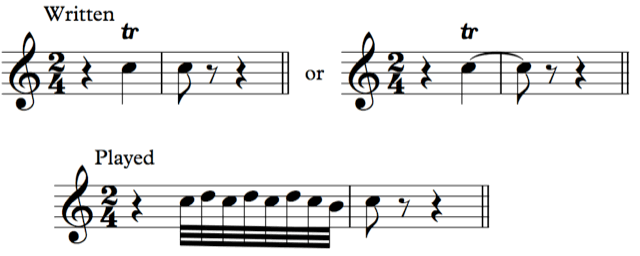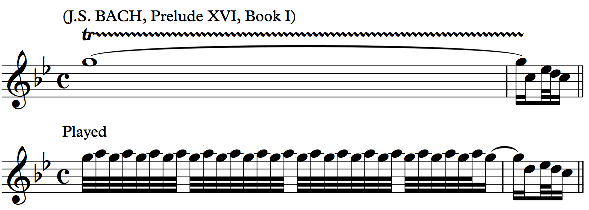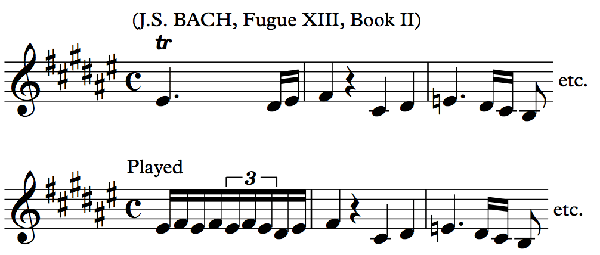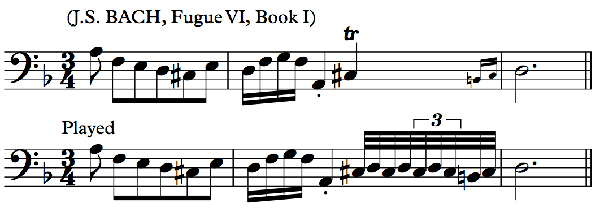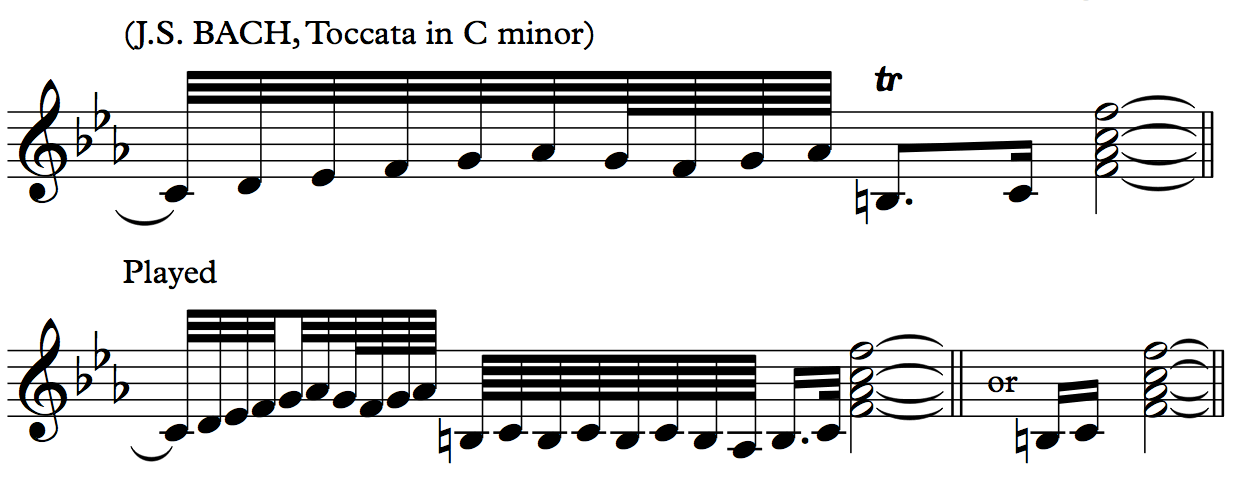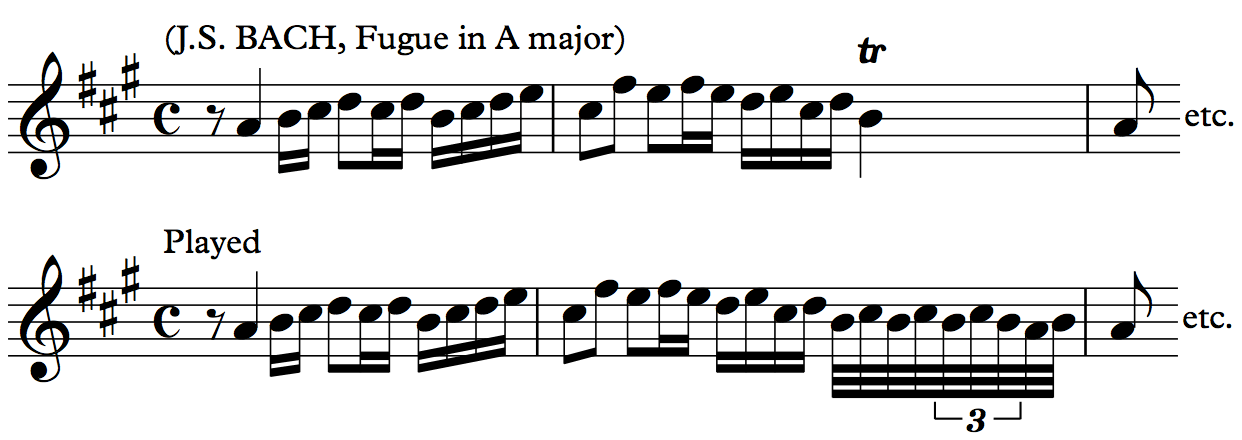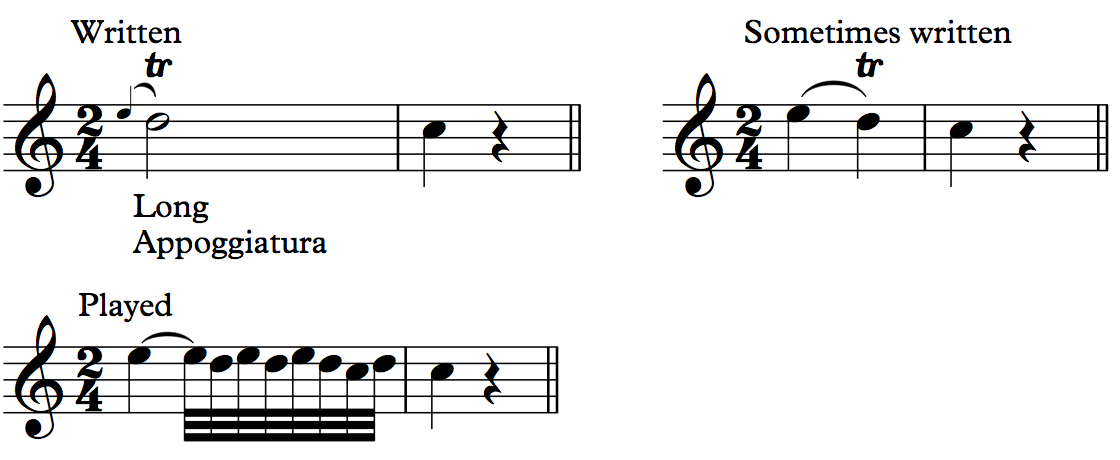The Trill - A Guide to Ornamentation
1.
The trill is indicated by the sign  . The note over which it is placed is called the principal note. The trill consists of the principal note, and the note of the scale above alternating in a rapid and regular manner.
. The note over which it is placed is called the principal note. The trill consists of the principal note, and the note of the scale above alternating in a rapid and regular manner.
2.
The Trill generally ends with a turn, whether indicated or not, especially when:
a.
it is followed by an accented note (the last note of the turn of the trill must be the principal note; to accomplish this it is often necessary to introduce a triplet near the end);
b.
it is followed by another note of the same name, whether tied to it or not, the turn should end upon the second note.
3.
There is no turn to the trill:
a.
when it is followed by an unaccented note;
b.
when in a succession of trills on a scale passage (unless indicated) except after the last trill;
c.
when (especially in baroque music) it is placed upon a tied note. In this case the trill ends a little before the second note;
d.
when followed by a rest;
e.
when the trill is upon a small value note.
4.
When the turn of the trill is indicated by two notes in small type, not included in the time of the bar, the speed of the trill is left to the player's judgment, but when the two notes are written in full sized notes and included in the time of the bar, they indicate the speed of the trill. Sometimes a single acciaccatura note indicates the turn.
5.
In baroque music especially a trill will often start on the higher of the two trilled notes.
6.
The trill should invariably begin on the upper note, when the principal note has just been heard.
7.
The trill begins on the principal note and not on the upper note:
a.
when it occurs upon the starting note of a subject;
b.
when it occurs after a staccato note;
c.
when it occurs after a rest;
d.
when it occurs upon the second note of some characteristic interval;
e.
when the preceding note is above the principal note, to preserve melodic outline.
8.
When the principal note is a dotted one, followed by a note equal to the dot, completing the beat, or division of the beat, the trill should end upon the dot, which may be prolonged and the following note shortened.
9.
The rule that the trill should end on the dot (no.7) does not hold good when the following note is not equal to the dot; nor when the following note, though equal to the dot, does not complete the beat, or division of the beat.
10.
When the principal note is preceded by an appoggiatura the first note of the trill is tied to the appoggiatura.
11.
In music composed since the beginning of the nineteenth century, the trill should begin on the principal note (unless otherwise expressed).
12.
The note upon which a trill commences is often indicated by a note in small type, placed before the principal note.
13.
When the principal note of a Trill is preceded by two or three notes in small type, they should be incorporated in the Trill.
14.
When a sharp, flat or natural sign is placed before or above the trill, the upper note is to be played sharp, flat or natural, as indicated.



